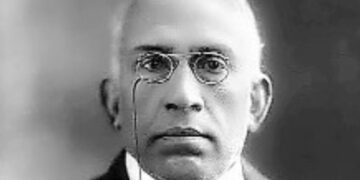On 23 August 2023, Yevgeny Prigozhin, the leader of the Wagner Group and a well-known figure in the world of private Russian mercenaries, died in a fatal plane crash northwest of Moscow with nine other people on board. However, social media channels associated with the Wagner Group alleged a different narrative – that the plane had been shot down by the Russian Air Force.
For many, Prigozhin’s demise was the chronicle of a death foretold after his mutiny against Russian President Vladimir Putin, two months before his death.
But behind this dramatic episode lies a larger story – the story of private security and military companies in Russia. How did the Wagner group rise to prominence and wield such power that it could even instigate a mutiny against Russia? What role did it play in shaping the country’s security landscape?
To understand this, we need to delve deeper into the history and look at the events that paved the way for the emergence of the private military company, the Wagner Group.
In a video, Yevgeny Prigozhin was seen addressing a group of men in one of the correctional centers in Russia. The video highlights Wagner’s recruitment strategy which includes hiring soldiers from prisons, correctional centers, and other similar institutions.
The fact that Prigozhin could recruit prisoners demonstrates the extent of influence he achieved within the Russian political and defense landscape. According to some analysts, the video in which Prigozhin declares himself as the chief of the Wagner Group is supposed to leave no room for doubt – this was a business, and the Wagner Group was Prigozhin’s brainchild.
The Wagner chief Yevgeny Prigozhin started his career as a petty criminal. Even spent a decade behind bars for his previous crimes. Released from jail in 1990, Prigozhin operated a hotdog stand in St. Petersburg, before opening a restaurant called the Old Customs House which attracted none other than Vladimir Putin. From there, his business began expanding.
Initially, Prigozhin was just an acquaintance of Vladimir Putin. Their acquaintanceship evolved, and Prigozhin’s trajectory took an unexpected direction. He started focusing more on catering businesses, and that’s how he came to be known as Putin’s Chef.
Emergence of the Wagner Group: Rise, Power, and Intrigue
It is presumed that In 2014, at the beginning of the Russia-Ukraine war in Donbas and during the annexation of Crimea, Russia fomented a revolution in Kyiv. It used small mercenary groups to support pro-Russian separatists in their fight against Ukrainian forces. One of these groups was Wagner.
It was long reported that Pregozhin had links with Wagner but he consistently denied any association with the private mercenary group. Until 2022, it was unclear who founded and led the group. It was during the Russian invasion of Ukraine that Pregozhin publicly asserted his role as the founder and leader of Wagner.
The emergence of the Wagner Group was atypical of what the world perceived as a military. The Kremlin initially disagreed with the existence of the Wagner group. They did not want the world to know about the existence of such a group, which could carry out full-fledged actions to achieve results such as the ones in Ukraine and various other regions beyond the continents, in exchange for money and that too huge amounts of it. The Wagner group and its chief Yevgeny Prigozhin stayed in the shadows. These men would massacre people in large numbers, commit heinous crimes including rape and looting natural resources of the region they attacked, and then carry it off to Kremlin. Not only Russia, Prigozhin’s troops played a major role in extending Russian influence worldwide. Spread across four continents of Africa, Asia, Europe, and Latin America, the Wagner group was created to be used as an instrument of unconventional warfare, which meant ‘to create conditions of plausible deniability.’
Prigozhin’s catering company, Concord, was known to secure contracts for supplying food and essential items to the Russian army. These contracts allowed the company to generate revenue through its engagement with the defense industry. Subsequently, the profits garnered from these endeavors were channeled into funding the Wagner group, bypassing direct channels within the Russian government.
Expansion Into Syria
In 2015, Russia intervened in the Syrian civil war and contracted the Wagner Group to secure energy resources vital to the Assad regime. The deal was simple: Russia gets a share of the country’s natural resources.
Wagner’s first task was to shield Bashar al-Assad’s regime, and that meant fighting with any combination of US-backed rebels, Kurdish forces, and ISIS. Wagner’s presence in Syria was orchestrated through a company called Evero Polis. Interestingly, the same company was contracted by the Syrian government to secure its oil fields.
A report by the Wall Street Journal unveiled 64 companies tied to the Wagner founder, with half of them serving as a complex web of front companies. This network was used to obscure the movement of funds and resources, all tracing back to the Kremlin. However, these shell companies only served to pay the salaries for the fighters while their main purpose was to manage money and men while maintaining discretion in these deals.
Oil was particularly profitable for Wagner in Syria. Notably, Evero Polis’ agreement with the Syrian government revealed that Wagner would receive a 25 percent share of production for each oil field it captured.
By 2017, Wagner controlled key oil and gas fields, including the high-yielding Al-Shaer gas field in Homs, generating substantial annual revenues of millions of dollars from each field.
By 2019, Wagner had secured rights for oil and gas drilling across approximately 10,000 square miles of land throughout the country. As recently as 2021, a Wagner-affiliated company obtained rights for oil and gas drilling in an offshore territory spanning 2,000 square miles.
Moreover, Wagner’s fighters played an important role by absorbing significant losses that the Russian military could not. Syria’s successful business model became a blueprint for Moscow to extend its influence in other parts.
It was an example of how business can be done. They infiltrated without letting anybody know and managed to capture many of the important oil, gas, and mineral resources. And they did it at minimal cost. Russia found a very successful model and wanted to replicate it. The group did just that when it expanded into Africa.
Expansion Into Africa
The Wagner group also maintained a strong foothold in the African continent. It garnered huge success in its expansion there, especially in the Central African Republic, Equatorial Guinea, Libya, Central African Republic (CAR), Chad, Mali, Burkina Faso, Sudan, Mozambique and Madagascar.
Interestingly, two days before his death, Yevgeny Prigozhin recorded a video saying that the group would ‘set off on a new path – to Africa.’
Under the aegis of Russia, the Wagner group first targeted countries that were going through a security crisis. There they would offer their security services and in exchange would demand shares of natural resources of these countries through several shell companies. Some of these African nations were previously French colonies, with weakened governments owing to French military presence.
Expansion Into Central African Republic
In the Central African Republic, a shell company named Sewa Security Services was used by Wagner to provide security to the president and other high-level officials. This company was a subsidiary of Lobaye Invest, another company with at least three mining licenses in the country.
In January 2018, the Wagner carried out training tasks in the Central African Republic, setting up bases where they would train the local armed forces to constrain the rebels, posing it as the only possible solution to recover Central African Territory. But in reality, Wagner was taking over their resources. One of the major examples is the Ndassima gold mines. In a 2011 report, it was projected that Ndassima could produce more than 1.4 million ounces of gold over about eight years, that’s nearly 3 billion dollars worth at today’s prices.
One of the most grievous incidents under the Wagner group was The Boyo Massacre. A 2022 UN Human Rights Council report detailed the brutal assault on the civilians there. The Boyo Massacre is one small example of atrocities Wagner has committed across the continent. Unfortunately, the government has no control over what is going on in the region since Wagner took control. Meanwhile, the Wagner-backed companies continue to develop across Africa in different sectors of the economy, particularly in the Central African Republic.
The involvement of Wagner is not limited to security or natural resources. The group has been actively involved in creating political scenarios in Africa. Analysts believe that Russia is presenting itself as a friend and helper who is willing to foment various forms of propaganda and disinformation. Ranging from Soviet art style Billboards in cities in the Central African Republic to making children’s cartoons to create an impact.
Expansion Into Mali
According to news reports, in 2020 Wagner supported and trained Malian junta leaders in Russia who later forced President Ibrahim Boubacar Keita to resign.
Wagner has had at least 1,000 fighters in Mali since 2021. They were hired to fight armed Islamic extremist groups, replacing the UN and French peacekeepers who were previously there. Recently, the Malian military junta kicked out the fighters, lifted all UN sanctions against the Malians, and abolished a panel of experts who had been critical of the Russian Wagner Group’s activities in the West African country.
Later, in Burkina Faso, Wagner entered after a coup by the military evicted the French forces, and called Russia its strategic partner.
The WAR In Ukraine
The Wagner group came into the limelight in the aftermath of Russia’s special operation in Ukraine. After a thorough operation in Africa, Russia called Wagner back home for the urgent need of the state as it prepared for a full-scale war in Ukraine.
As the days progressed Wagner performed better than the Russian military on the battlefield, making a noise in the world forum, and making people aware of their presence. Soon Prigozhin started recruiting prisoners into the war, to draft fewer civilians, using them as cannon fodder. This was a new phase for Wagner where they came out, taking center stage in the Ukraine-Russia war, giving strong evidence of its links with the Kremlin.
Wagner played an important role in capturing the eastern Ukrainian city of Bakhmut, a city of great strategic importance to Russia. During this fight, Prigozhin very publicly chastised the Russian Army chief, Valery Gerasimov, and defense minister, Sergei Shoigu, for under-supplying Wagner’s troops, many of whom were killed or injured.
WHAT NOW?
For Russia, Wagner was a political military tool of state influence that could be strategically deployed under the guise of plausible deniability. Initially denied by the Kremlin, its existence was shrouded in secrecy. Yet, these mercenaries operated on a massive scale and Wagner became the cornerstone of Russia’s foreign policy.
But Prigozhin’s death sparked a flurry of speculation about the group’s future.
Meanwhile, a new figure, Anton Yelizarov emerged as the first choice to succeed Prigozhin and lead the Wagner group. Hailed as a “Hero of Russia,” Yelizarov is the only surviving leader of the Wagner Group. Several Telegram channels affiliated with the Group suggest that Yelizarov may have already assumed leadership responsibilities.
However, there are several speculations regarding Yelizarov’s new role. Firstly, the Wagner Group’s leadership has historically been confidential, making it highly unlikely that the new leader will be formally announced. Secondly, unlike Prigozhin, who, due to his close ties to Putin, publicly criticized certain Russian policies, it’s unlikely that the next leader will enjoy such liberties.
In addition, Prigozhin’s death, suspected to be masterminded by Vladimir Putin, is also a strong signal to Wagner’s new leader that he will have to obey the Russian authorities, with the Kremlin taking over Wagner’s resources.
Well, analysts suggest while the group may undergo some changes, Wagner’s operations are expected to continue in much the same way as it had under Prigozhin’s leadership. In the meantime, a significant challenge looms for Putin: finding another deep-pocketed entity to fund the paramilitary’s operations without directly posing any threat to his regime.
Putin’s darkest battles were fought by Prigozhin for decades. However, a failed mutiny led by Prigozhin served as a stark reminder that these forces could potentially pose a threat to Putin’s decades-long grip on power. The name of Wagner may disappear, but not its troops in the field and certainly not the methods Prigozhin created for his benefactor Vladimir Putin.
















Comments